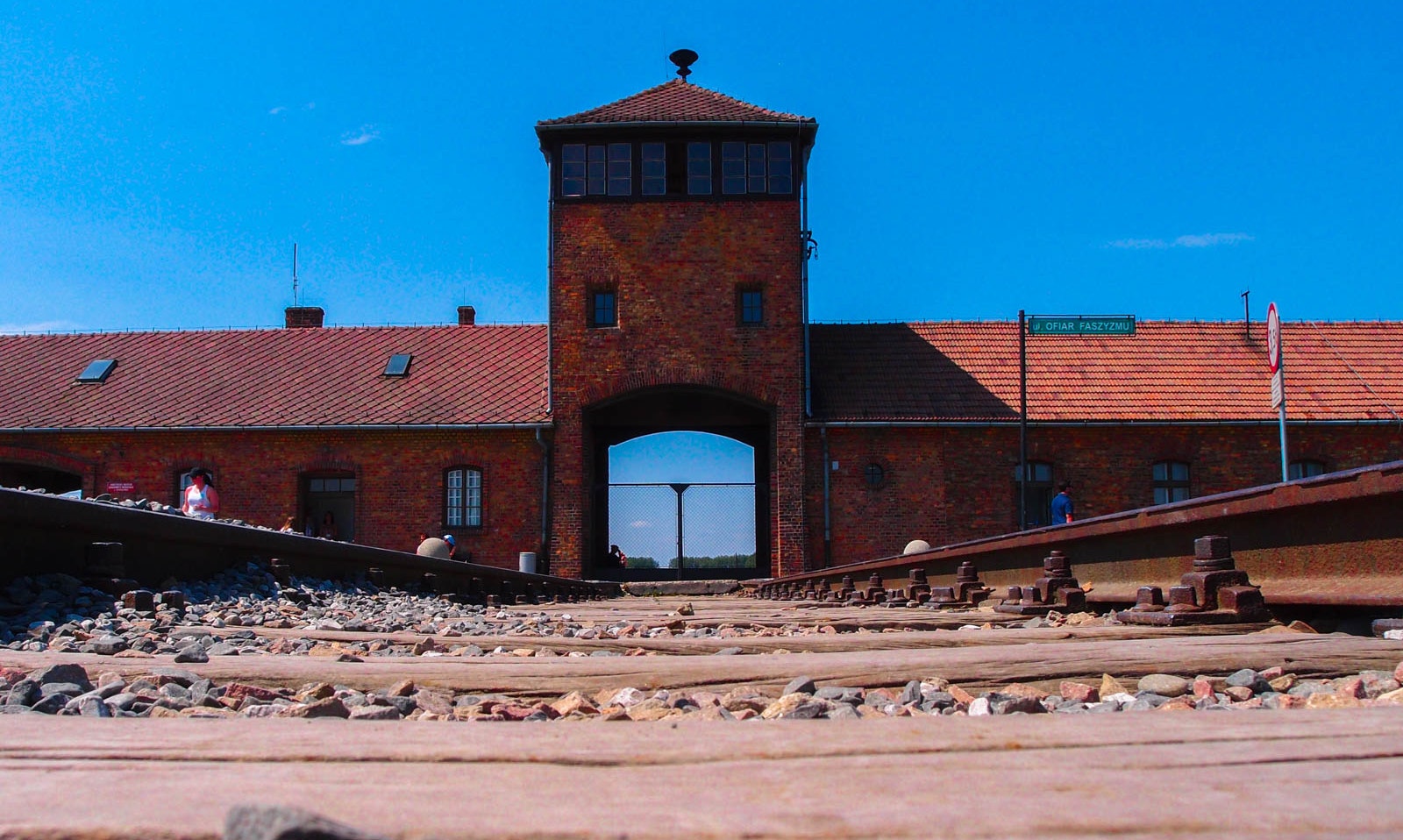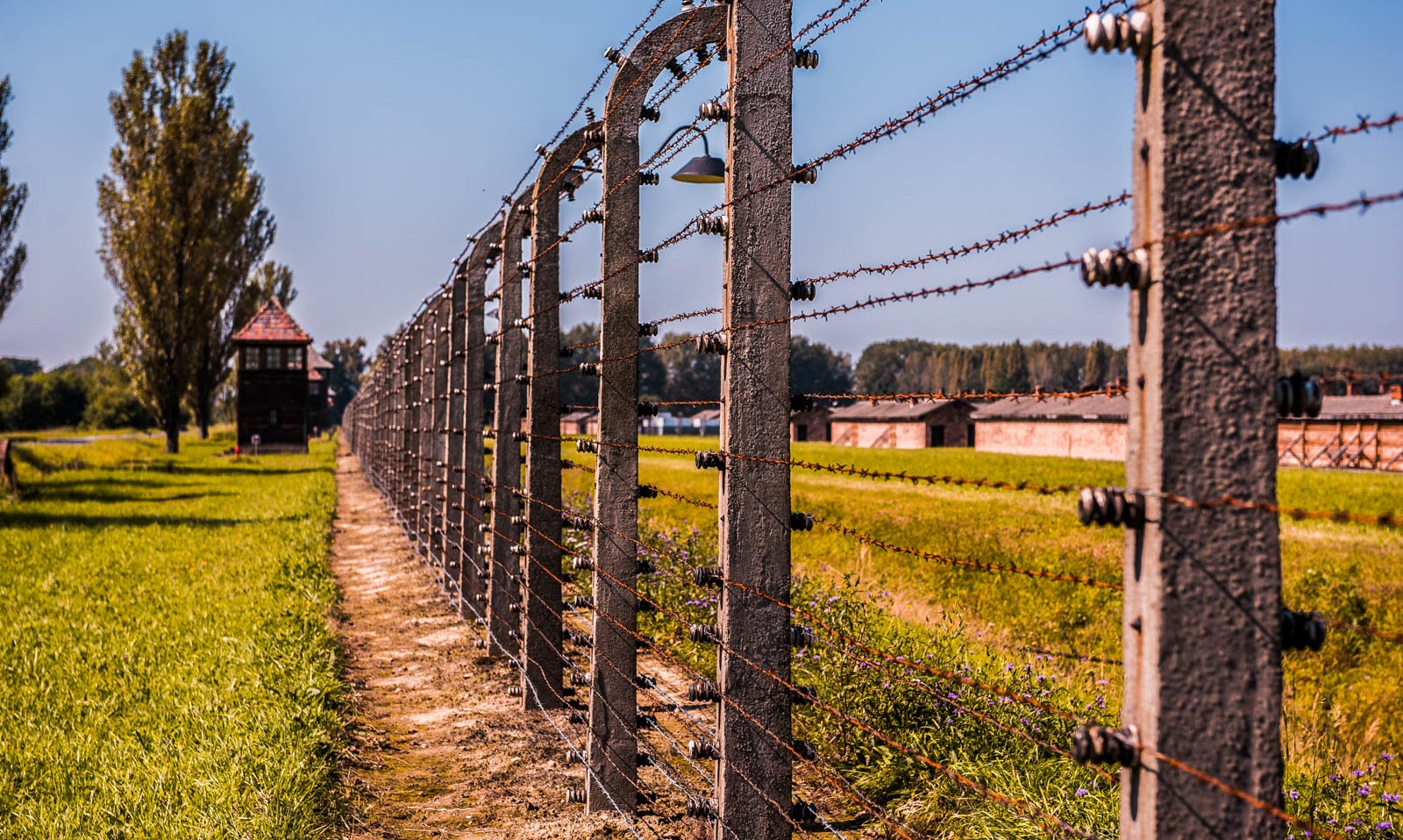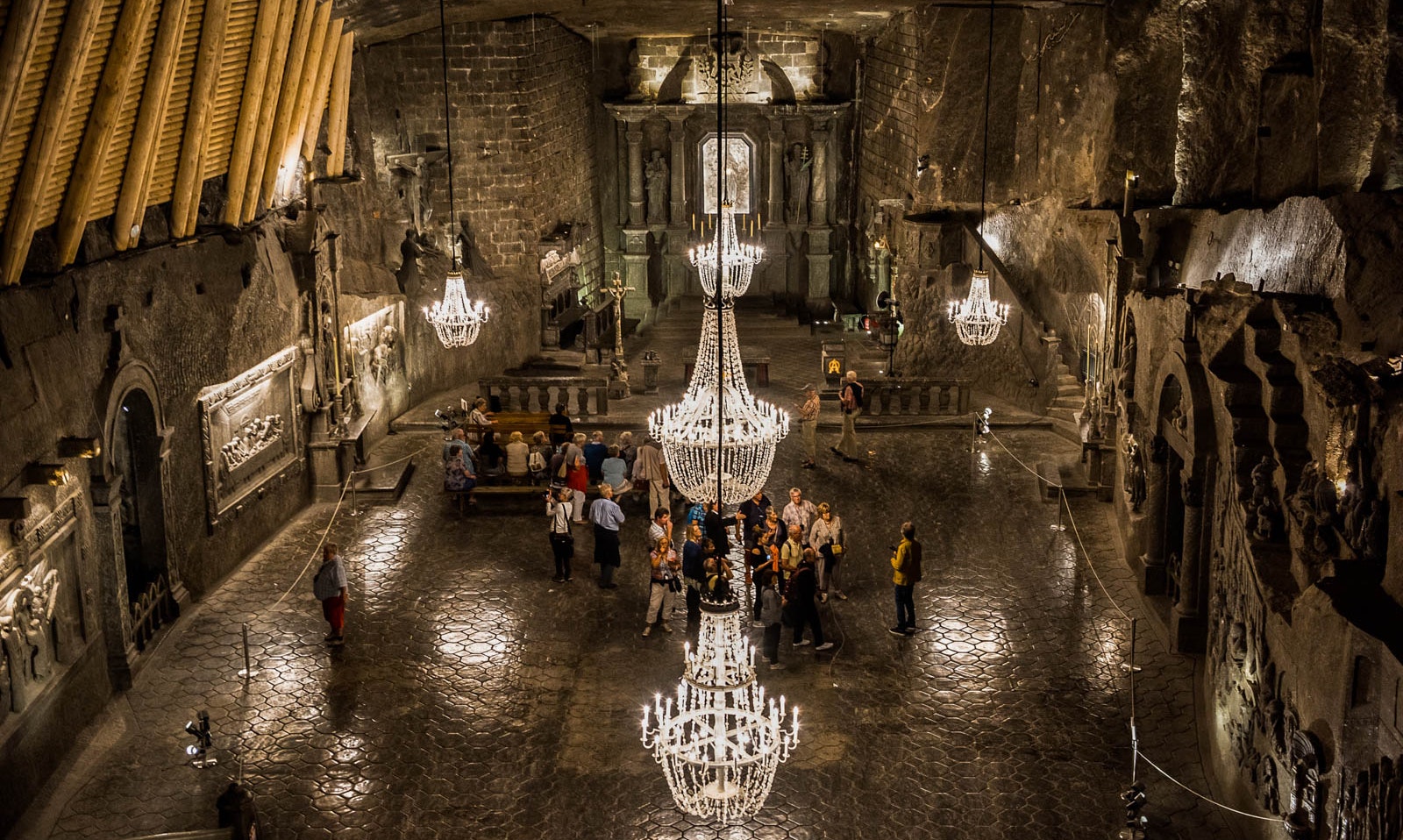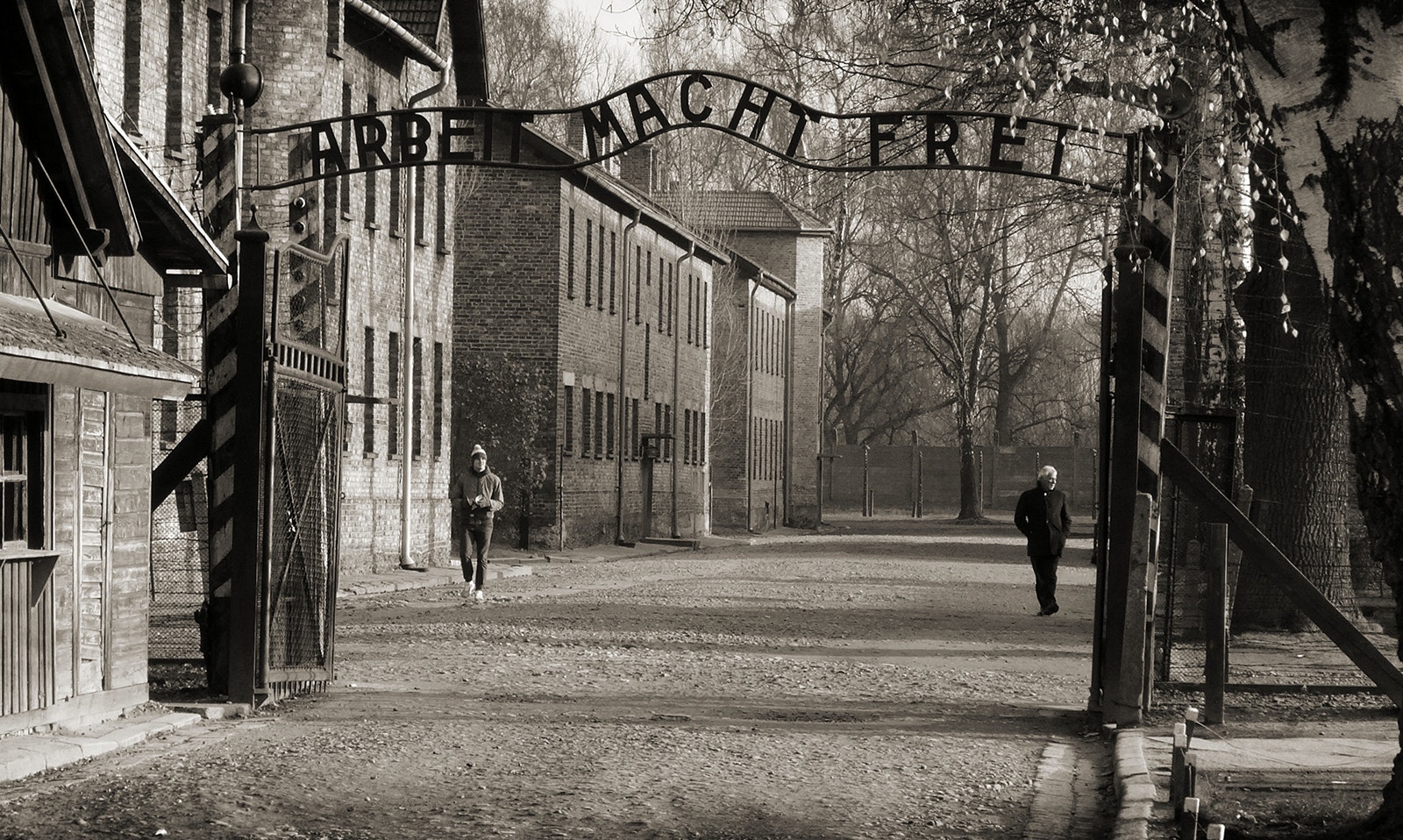A sobering reminder of the horrors of war and unchecked power, the Auschwitz concentration camp and museum are simultaneously revolting and inspiring. A complex of over 40 concentration and extermination camps operated by Nazi Germany during World War II, Auschwitz now stands in tribute to all the people who lost their lives at the site of the Holocaust.
While you might be questioning the need to visit the biggest death camp in the world, the experience is worth it. During your guided Auschwitz tour, you'll get to visit the gas chambers where prisoners were executed en masse, the inhuman living quarters, the original barracks and even the railway prisoner unloading platform.
The time you spend at the Auschwitz concentration camp reinforces the inhumanity of the Nazis while shedding some light on the pain and suffering of the inmates. Pay homage to the indomitable spirit of the inmates, those who lost their lives and others who lived to tell the tale.
How to get there

The Auschwitz concentration camp has two sections, Auschwitz I, the primary camp, and Auschwitz II-Birkenau, which is located 3 km away from the main site. The Auschwitz and Birkenau concentration camp is located in the ancient city of Oswiecim, around 66 km west of Krakow.
Oswiecim happens to be the name of both the city and the concentration camp which was established outside its boundaries in the 1940s. The entry gate to the concentration camp is located 2.5 km from Oswiecim's city center. Given its proximity to Krakow, most tourists set a day aside to visit Auschwitz while touring the former. If you are wondering how to get to Auschwitz from Krakow, we have got you covered. Here are some of the best options:
Bus
Board the Auschwitz to Krakow bus at Dworzec MDA (MDA Station), located in Bosacka Street behind the main railway station of Krakow. The bus journey from Krakow to Auschwitz will take around 1 hour 30 minutes to 2 hours and you'll have to walk for about 10 minutes from the bus stop to the museum.
Train
You can take the train from Krakow to Auschwitz at the Main Railway Station. There are direct trains from Krakow to Auschwitz running every hour or two and the journey lasts for about 1 hour and 40 minutes. Do note that a train ticket costs almost twice as much as a bus ticket and if you walk from the station to the concentration camp, you'll need another 20-30 minutes.
Taxi
If you don't want to take public transport, you can also hire a taxi. The taxi costs roughly 198 PLN per person, which is around $52.
If you're visiting Auschwitz from Warsaw, the best way to travel is by train. A super-fast train will get you to Krakow in approximately 2.5 hours. From Krakow, you can pick any of the three options listed above.
Things to see in Auschwitz

Auschwitz is a big space and you'll be exploring some truly revolting reminders of the pain and suffering of the Jews while on tour. Here are some of the important parts of the camp you shouldn't miss out on:
Auschwitz I, Bunker 5
Arguably the most affecting and sad of all the bunkers in the camp, bunker 5 features a collection of abandoned or long lost objects belonging to the inmates. From glasses, shoes, pots and pans to the shaved hair of the victims, this bunker truly showcases the people who suffered Nazi oppression.
Auschwitz I, Bunker 11
Also known as the death block, this is where Zyklon B gas was first used to kill inmates. Adjacent to this block is the death wall where many people were shot. The windows in this block are nailed shut with wooden boards to prevent outside prisoners from seeing what was happening inside.
Auschwitz I, Bunker 20
Divided into two floors, this bunker delves into the rise of the Nazis. The ground floor showcases the persecution in France while the second-floor museum focuses on the war in Belgium. The museum houses truly terrible, real-life photos of the war, legal texts introduced under the Nazi regime, and the awful propaganda posters distributed by them.
Auschwitz I, Bunker 27
Amongst the most heartbreaking parts of your tour will be the stop at bunker 27. The ground floor of this bunker has a massive book with the names of almost all the Jewish victims. The upper floor features an art collection comprising of children's drawings found in the camp.
Birkenau
Located 3 km away from the main Auschwitz camp, the Birkenau site is where most of the inmates were killed. Eerie and full of horror, this part of the camp housed most of the gas chambers. Get a guide to escort you since most of the objects and rooms here aren't labeled or very informative.
Auschwitz from Krakow Guided Tour
Learn about the liberation of Auschwitz and the harrowing lives of those imprisoned there on your visit to the infamous concentration camp, Auschwitz Birkenau.
Embark in an air conditioned minivan or minibus from Krakow to relive a piercing chapter in humanities history at the Auschwitz-Birkenau Memorial and Museum on this guided tour. A professional English-language tour guide will escort you through the trip with fascinating details about the history of the concentration camp.
Know before you go

- Auschwitz offers a tragic yet deeply moving look at the atrocities committed by the Nazis. To fully understand the significance of what you're seeing, opt for a guided tour. An Auschwitz guided tour is the best way to explore the concentration camp and learn about its history in detail. Also, you won't have to worry about missing an important part of the camp since your knowledgeable guide will be with you throughout the journey.
- If you decide to visit the camp and museum unguided, you can get free tickets through the official website.
- The months from April to October are considered peak season and if you're visiting the museum by yourself, we would recommend entering the camp before 10:00 AM or after 3:00 PM to avoid excessive crowds.
- The guided tour of Auschwitz camp needs to be booked ahead of time, particularly if you're planning to visit during peak season. By booking your tickets in advance, you not only guarantee your spot but can also avail discounts and offers online.
- There are two camps within Auschwitz, namely Auschwitz I and Birkenau. A free shuttle bus is available to travel between the camps. You are free to walk between the camps if you want to.
- Auschwitz is a somber place and you're expected to maintain proper decorum while inside. Unlike other tourist attractions where you can be loud, here, given the less than jovial history associated with the camp, you'll need to be mindful.
- Photography is allowed inside the Auschwitz concentration camp, but again be respectful while clicking pictures.
- You'll be walking around quite a bit while touring Auschwitz. Remember to wear comfortable walking shoes and bring plenty of drinking water.
- Small bags are allowed inside the site, but if you're carrying a large bag, it will need to be stored at the on-site lockers.
- There's a cafeteria at the museum offering hearty meals. You can also have breakfast or lunch at Hotel Olecki Oświęcim, located close to the camp. Please note that eating and smoking are not allowed inside the Auschwitz-Birkenau Museum.
- If you're looking for some reading material about the Holocaust and World War II, publications can be purchased at bookstores in the museum.
FAQs

Is entry to the Auschwitz Memorial free?
Can we enter the museum without a pre-booked entry pass?
Is there a dress code for visiting Auschwitz?
How long does it take to travel from Krakow to Auschwitz?
Is it safe to visit Krakow?
Is photography allowed in Auschwitz?
Are toilets available in Auschwitz?
How long does the Auschwitz tour take without a guide?
How many people are included in each group tour?
Is Auschwitz open during Jewish holidays?


